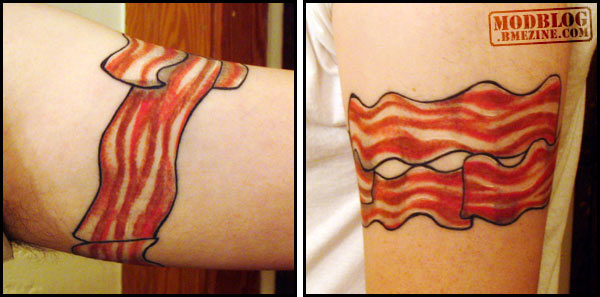
Author Archives: Shannon Larratt
Post navigation
Do your nuts hang low?
Antlered Girl
This tattoo was done by Craig Brown at Tsunami Tattoo in Tacoma, WA, inspired by an Audrey Kawasaki painting.

BME Newsfeed for Sep 9, 2006
- 2006-09-09: Canada: Canada’s first Virgin Festival rocks Toronto [by deadly pale]
- 2006-09-09: OR: Tattoo-fixated deputy reassigned [by Ka Crow]
Please note that links may expire. IAM members, please help out by submitting stories!
BME Newsfeed for Sep 8, 2006
- 2006-09-08: Canada: Delete this practice: Giving staff the e-boot [by deadly pale]
- 2006-09-08: PA: ‘Body Vandalism’ set to open in Pardeeville [by deadly pale]
- 2006-09-08: Australia: Ballina fan will carry Irwins face everywhere [by deadly pale]
- 2006-09-08: NY: 73-year-old has wife’s image tattooed on arm [by deadly pale]
- 2006-09-08: UK: Body art made its mark 300,000 years ago, scientists claim [by deadly pale]
- 2006-09-08: UK: Dad of 20 gets family-tree tattoo [by Ka Crow]
- 2006-09-08: CA: 49ers rookie relies on Bible tattoo [by Ka Crow]
Please note that links may expire. IAM members, please help out by submitting stories!
“To Remove Tattooing.”
I think in today’s history article I’ll quote an article on tattoo removal from 1891… Maybe tomorrow I’ll cover cosmetic tattooing (also popular in the 1800s). This article is from The Daily Light (San Antonio, Texas), dated June 1, 1891.
Mr. T. W. Dodd, of Walsingham, England, writes as follows in the Chemist and Druggist:
“Twenty years ago I removed three very indelible tattoo marks on my hand. Certainly it left a scar, but now it is scarcely perceptible. The operation was performed by applying nitric acid with the stopper of the bottle (a better instrument would be a glass rod pointed, to carry the acid), just sufficient to cover the stain, so as to avoid making a larger scar than needful, the acid to remain about one and a half minutes, until the cutis vera was penetrated and a crusted appearance shown, then washed of with clean, cold water. In a few days after this treatment a scab forms, which contains the tattoo mark or stain; remove it, and should inflammation supervene, poultice and bathe with warm water. In this way the skin with the stain is not only removed almost painlessly (I mean tattoo marks about the size of peas), but the nitric acid at the same time to a certain extent seems to decolorize the stain. Of course large tattoo marks, greatly extending over the surface, must necessitate the operation being performed differently.”
Dr. Variot, of the Paris Biological society, advises the following method: Tattoo the skin, in the usual way, with a concentrated ‘solution of tannin, following the original design. Then apply the crayon of nitrate of silver until the part tattooed with the tannin blackens. Wipe off excess of moisture and allow matters to take their own course. Slight pain continues two or four days, and after two months the cicatrix which results will almost disappear.’ — American Druggist.
Bacon Armband
The funny thing is, bacon tattoos are not unique to Mason (pictured here with his bacon armband tattoo by Ken Dean at Pino Bros Ink in Cambridge, MA) — Perk900 has one too!

Please don’t sue me, Pepsicorp.
Apparently in Samara, at least some of the residents wish that the Volga River overflowed with Pepsi instead of water…

Revolver Resurrection
Priests are Dangerous
“Trust me,” he says. “All the girls do.”


